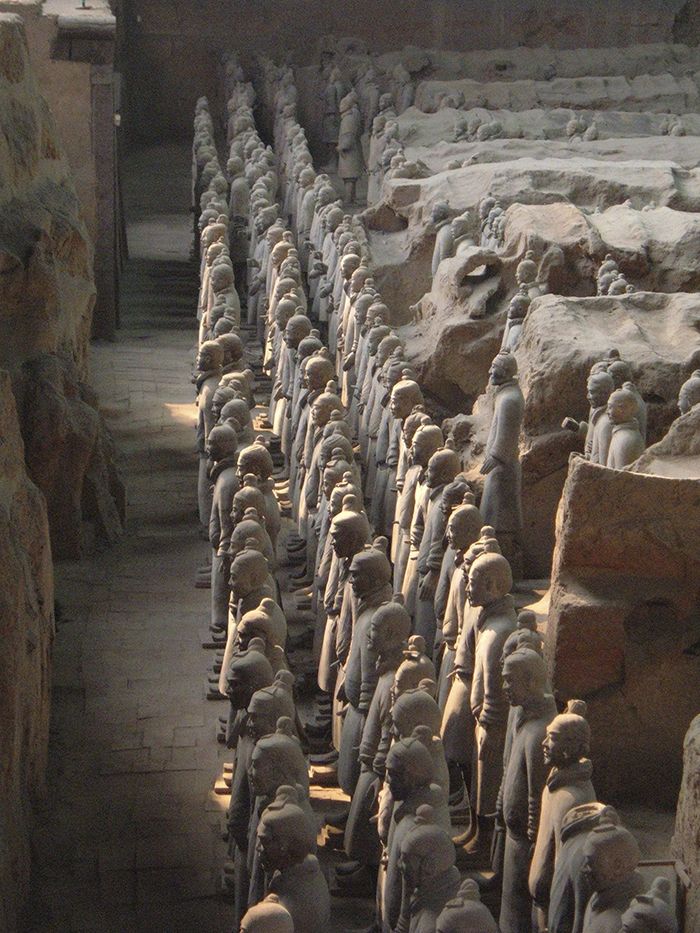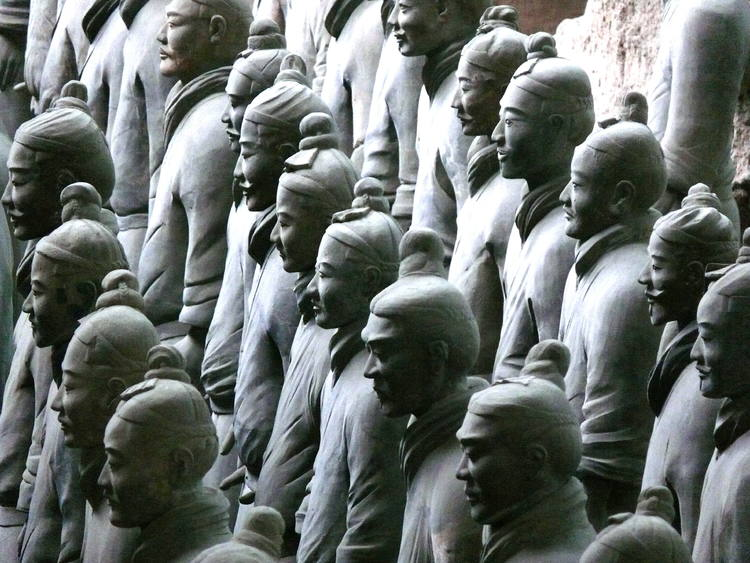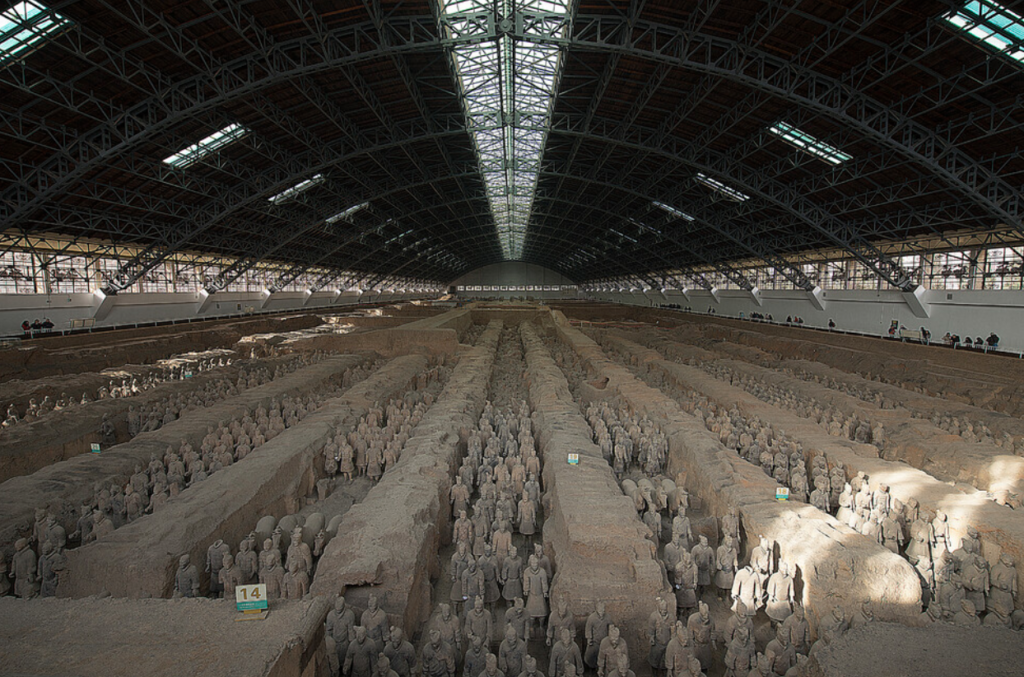Mausoleum of the First Qin Emperor
Although the construction of the site predates the origins of the Silk Road, it is located in the city of Xi’an, the beginning of the Silk Road, and has witnessed the rise and fall of the Silk Road over the centuries.
Introduction
Located at the northern foot of Lishan Mountain, 35 kilometers northeast of Xi’an, Shaanxi Province, Qinshihuang Mausoleum is the tomb of Emperor Qinshihuang, founder of the first unified empire in Chinese history during the 3rd century BCE. Begun in 246 BCE the grave mound survives to a height of 51.3 meters within a rectangular, double-walled enclosure oriented north-south. Nearly 200 accompanying pits containing thousands of life-size terra cotta soldiers, terra cotta horses and bronze chariots and weapons – a world-renowned discovery – together with burial tombs and architectural remains total over 600 sites within the property area of 56.25 square kilometers.
As the tomb of the first emperor who unified the country, it is the largest in Chinese history, with a unique standard and layout, and a large number of exquisite funeral objects. It testifies to the founding of the first unified empire- the Qin Dynasty, which during the 3rd BCE, wielded unprecedented political, military and economic power and advanced the social, cultural and artistic level of the empire.


Adaptation
When the heritage was discovered in 1974, it was in a well-preserved form. Scientists discovered the reason how China’s renowned Terracotta Army’s weapons remained so well preserved for over 2,000 years: A combination of bronze, and the soil the massive army was buried in.
Nevertheless, exposure of a large number of artefacts to air after excavation can still cause irreversible damage. Therefore, as early as the beginning of the excavation, the archaeological institution constructed a protective structure on the site to prevent the impact of external weather on the artefacts.
Preservation

The protection of cultural relics has entered a systematic and deep stage.
Qin Shihuang Imperial Mausoleum Museum to the actual protection problems faced, such as Qin Mausoleum bronze carriage protection and restoration, Qin Terracotta Warriors painted protection and Qin Terracotta Warriors soil site and related cultural relics mould protection, carried out a large number of cultural relics protection work, has accumulated valuable experience in the protection of the establishment of the four advantages of the research direction, that is, the ceramic painted cultural relics protection and restoration, the scientific analysis of the pigments and research, environmental monitoring and control and microbial prevention and treatment.